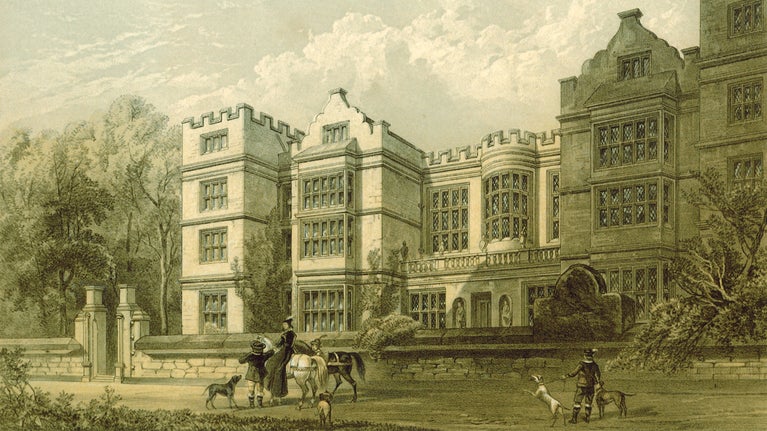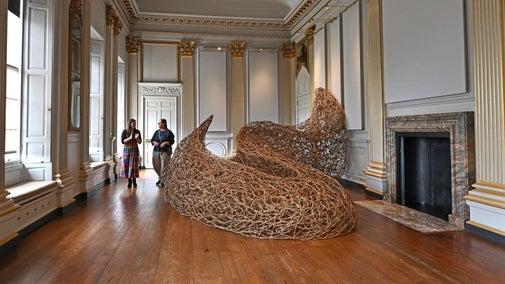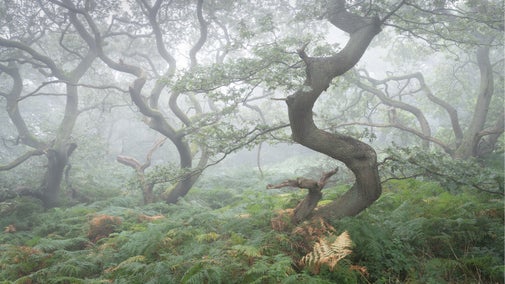Between Chaos and Light by Ed Kluz

Jump to
A new immersive exhibition by Ed Kluz comes to Fountains Hall from summer to winter solstice 2025.
What is Between Chaos and Light?
Inspired by a world in a state of change, Ed's powerful piece explores the tumultuous chapter of history which saw the end of the Tudor era and beginning of the Stuart - a period caught between the aftermath of the dissolution and the expanded horizons of the enlightenment.
The installation uses video and sound focussed around a momentous central sculpture inviting visitors to immerse themselves fully in the space.
Between Chaos and Light is open to visitors every day* from 21 June to 21 December from 11am to 3pm.

Meet the artist - Ed Kluz
Ed’s work explores how we connect with the past - how buildings, landscapes, and objects shape our memories and sense of place. Through painting, drawing, printmaking, sculpture, sound, and video, he reflects on how our present-day perspectives influence the way we view historical sites and stories.
His practice draws from a wide range of sources, including archival maps, architectural drawings, museum collections, film, and music. By weaving these elements together, Ed creates imaginative connections between past and present, prompting us to see familiar places in new ways.
Rather than offering fixed answers, his work encourages us to pause and reflect - on how the past continues to echo in the present, and how our own viewpoints shape what we choose to see, value, and remember.
‘This piece is about this idea of comfort in times of change and shift, When things are happening so fast you can barely get to grips with it. Where do we find that comfort? Where do we find that grown up voice? Where do we find that wisdom? Fountains Abbey and Studley Royal offers up a remarkable landscape to reflect upon. One that really speaks of the evolution of the modern age. Fountains Hall where my work will be displayed, has a mysterious, almost casket-like quality. It looks like a jewel box from the outside. It’s highly decorative and theatrical and very performative in its architectural language.’ - Ed Kluz
Where to see the installation
You’ll be able to experience Between Chaos and Light on the first floor in Fountains Hall from summer to winter solstice - Saturday 21 June to Sunday 21 December from 11am-3pm.
What else is there to see?
There is in-depth information about the piece and a supporting video in Fountains Mill which is open daily from 10am-5pm. This is a great way to learn more about what has inspired Ed's work and how it links to Fountains Abbey and Studley Royal before you view the installation.

The significance of Fountains Hall
Fountains Hall is perhaps the most mysterious place on the estate. What’s really special about this building is how it links the hundreds of years between the dissolution and the 18th century heyday of Studley Royal.
The origins of Fountains Hall lie in this chaotic chapter of British history, set against the backdrop of the Tudor and Stuart Royal dynasties. From housing the manorial court of staunch Protestant Sir Stephen Proctor, it later housed the Catholic chapel of the Messenger family before becoming part of the Aislabie estate and accommodation for estate workers - Fountains Hall has seen the world through transition.
You'll be able to learn more about the fascinating history of the building and how its history and presence has inspired Ed Kluz in Fountains Mill while the installation is in residence.
Can I bring my dog?
While waggy tails on short leads are welcome in most parts of the estate, dogs cannot be brought inside Fountains Hall.
To learn more about bringing your dog to Fountains Abbey and Studley Royal visit: Dog walking at Fountains Abbey | Yorkshire | National Trust
You might also be interested in
History of Fountains Abbey and Studley Royal
Step back into a dramatic past and imagine what life would have been like for the monks lived here, and learn how Fountains Abbey and Studley Royal became one.

Art at Beningbrough
Discover more about the Reddihough Galleries on the first floor of Beningbrough Hall. Currently on show, Whispers of the Wilderness: Exploring Wilderness Gardens is a full sensory exhibition linking history and fashion, with contemporary sculptures and sketching. See past exhibitions and what's coming next.

Exhibitions at Nunnington Hall
Nunnington Hall hosts a programming of changing exhibitions throughout the year. Recently we have welcomed established artists, photographers, illustrators and sculptors alongside new artists and community groups to display their work in the gallery.
